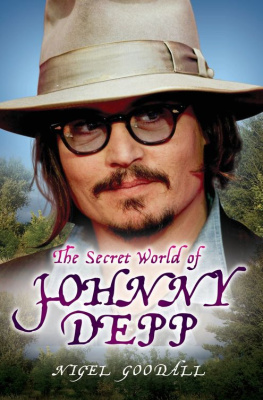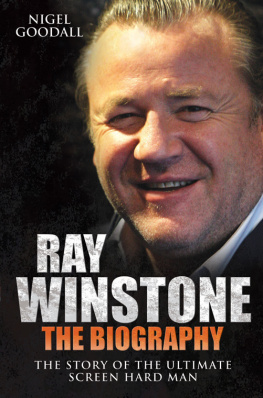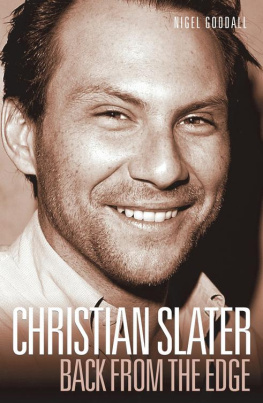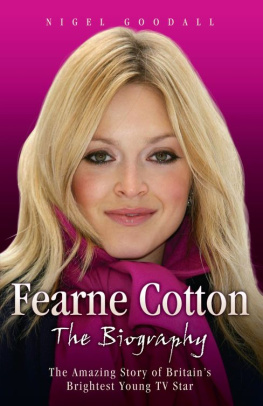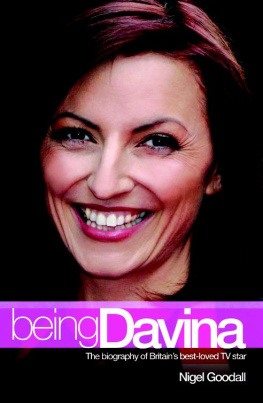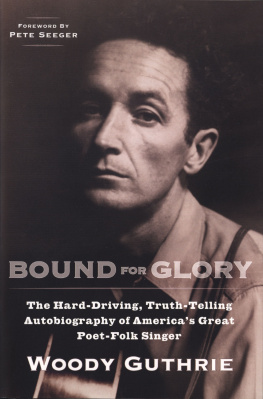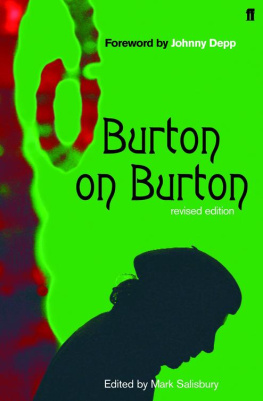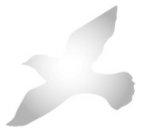AUTHORS
ACKNOWLEDGEMENTS
T hanks to everyone who has helped with this book and made it such fun to do. They include Vicki McKay, Mette Vesterdal, Neil Milner, Scott Coldwell, Michael Wilson, Eric Harshbarger, Cheryl Newman, Adam Parfitt, Ceri Parsons, Charlotte Heylar and Laurie Bratone. Keith Hayward was an enormous help and did some invaluable research. I would also like to mention two excellent websites devoted to all things Johnny johnnydeppfan.com and Everything Johnny both of which were of great help to me, and earned me my own Johnny and Winona pages on their sites. Thanks are also due to James Steven at Consolidated Communications, Georgina ONeil at Entertainment Films, Charlotte Day at Sony Pictures, Vicky Lewis at Buena Vista International, the Louis B Mayer Library at the American Film Institute in Los Angeles, Sean Delaney at the British Film Institute for all his help with film productions notes, scripts and articles, and the American Indian College Fund in New York for their generous help. Thanks too, to Mark Barker for the US box office information in the filmography. I am also indebted to Charlotte Rasmussen for the informative film glossary at the end of this book.
At Blake Publishing, my thanks to John Blake for commissioning the book, my editors Mark Hanks and Allie Collins for their enthusiasm and sharp eyes, and Graeme Andrew for excelling with the design and setting of the book, the stunning cover and picture sections.
I would also like to acknowledge the many magazines and newspapers that were consulted during my research: Rolling Stone, Vogue, US, Now, GQ, Interview, Advocate, Vanity Fair, Icon, Harpers Bazaar, People, Hello, The Face, the Guardian, the Observer, The Times, Heat, The Sunday Times, FHM, People Weekly, TV Guide, Studio, Movieline, Newsweek, Eva, Flicks, Daily Star, Sky, Chat, Chicago Sun-Times, the Mirror, Los Angeles magazine, Total Film, Winona Fanzine, Planet Winona, Daily Mail, the Sun, Cowboys & Indians, Shout, the Detroit News.
Finally, I am indebted to two books in particular: Johnny Depp: A Modern Rebel by Brian J Robb (Plexus, 1996) and Winona Ryder by Dave Thompson (Taylor, 1997).
I DONT WANT TO KNOW WHOS HOT, WHOS NOT, WHOS RICH, WHOS POOR, WHOS SUCCESSFUL, WHOS JUST, YOU KNOW, TAKEN A DUMP. I DONT CARE. I DONT WANT TO KNOW ANY OF IT.
T he English writer Richard Holmes described the meaning of biography as: A kind of pursuit, a tracking down of the physical trail of someones path through the past, a following in the footsteps, of someone you would never quite catch. But maybe if you were lucky you might write about the pursuit of that fleeting figure in such a way as to bring it alive into the present.
Looking back, that analogy seems apt to best describe my aim ever since I first wrote about Johnny Depp in 1997, in my biography of Winona Ryder, Johnnys highest profile girlfriend before Kate Moss. His three-year engagement to Winona was essential to my writing of her story. If I have succeeded in my aim, then I hope I have given the reader the correct tools to create his or her own portrait of one of Hollywoods most respected actors.
Back then, of course, if you had tossed a rock in Hollywood, the odds were reasonably high you would have hit some pretty boy haunted by his teen idol status and moaning about getting his due respect as a serious actor. Precisely the kind of teen pin-up star Johnny Depp used to be. In the years that have passed, of course, since he fronted every teen magazine at every newspaper stall, the 21 Jump Street star has made a concerted effort to leave his teen idol years behind and attain artistic credibility in its stead. And in so doing, he has created a body of work that stands proud in its integrity.
He passed on the Speed role that catapulted Keanu Reeves to stardom, declined offers to play Interview With the Vampires Lestat, and Bram Stokers Dracula (plum parts snatched up by Tom Cruise and Gary Oldman), rejected the mythic Legends of the Fall and the Thelma and Louise hustler assignments later taken by Brad Pitt, and chose to bequeath the roles of Robin Hood and Charlie Chaplin to Kevin Costner and Robert Downey Jnr.
Instead Johnny cemented his reputation in Hollywood by brilliantly portraying such outr souls as the lonesome, freakish protagonist of Edward Scissorhands, and the independent, cross-dressing Plan Nine From Outer Space director Ed Wood. As Johnny once explained, being a blockbuster boy was never on his agenda, so isnt it ironic that today, he is now the number one box office star in Hollywood, simply for doing what he usually does, playing a role that interests him. Except on this occasion, portraying a roguish pirate gentleman, in Jerry Bruckheimers action adventure Pirates of the Caribbean, earned him his first Oscar nomination for Best Actor. As Johnny told Chris Connelly on the red carpet outside the Kodak Theater along Hollywood Boulevard during the arrivals for the 76th Annual Academy Awards ceremony, This is a horse of a different colour.
The product of a small-town, blue-collar upbringing, Johnny was born to an engineer father and a homemaker mother in Owensboro, Kentucky. As a young boy, he spent as much time as possible visiting his beloved grandfather, who died shortly after Johnnys seventh birthday. That same year, Johnnys family moved to Florida, where his father found employment as director of public works in the coastal town of Miramar. Distraught over the death of his grandfather, and feeling displaced by the loss of the only permanent home he had known (the family lived in a dozen different houses after relocating to Florida), Johnny had become a surly and disinterested student by the time he reached high school.

